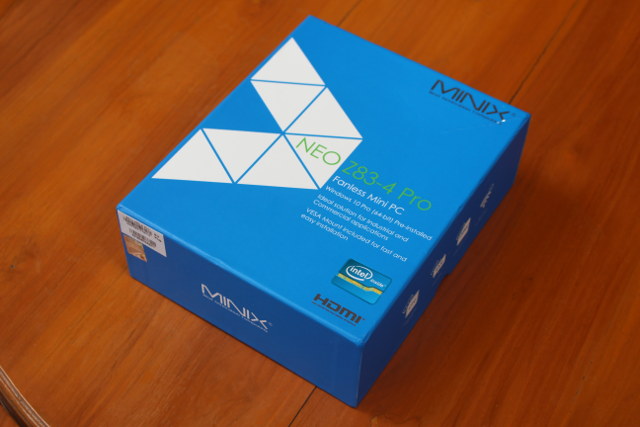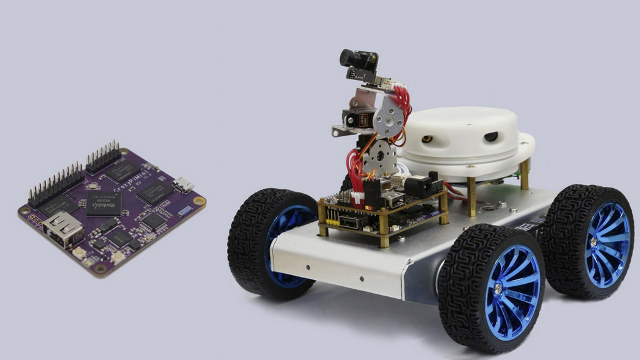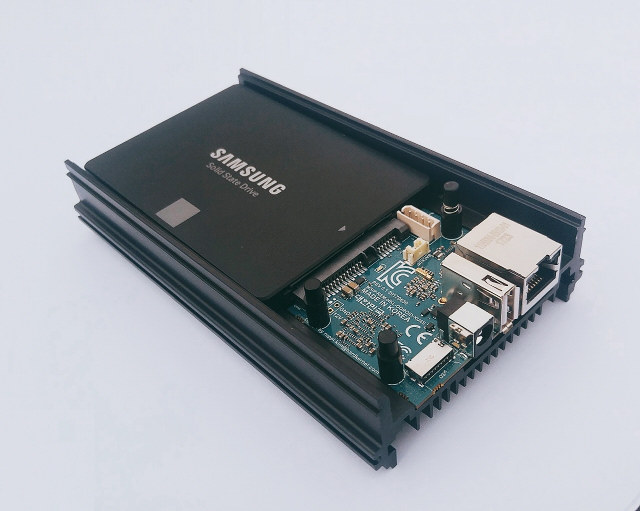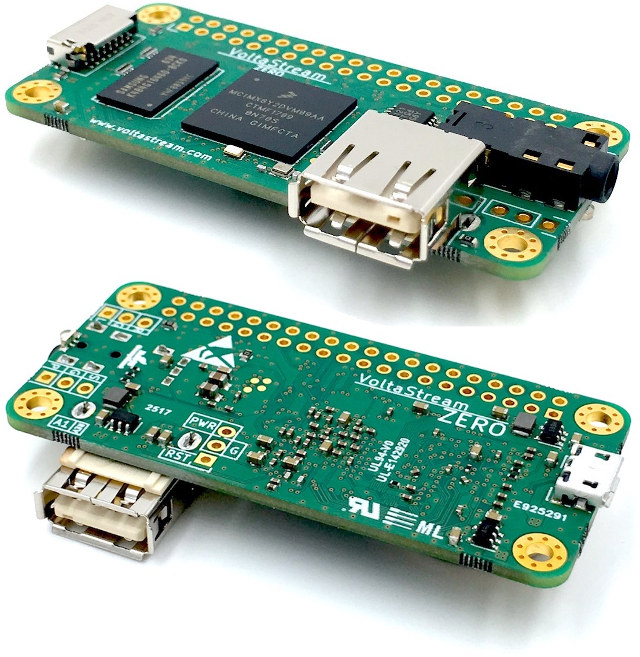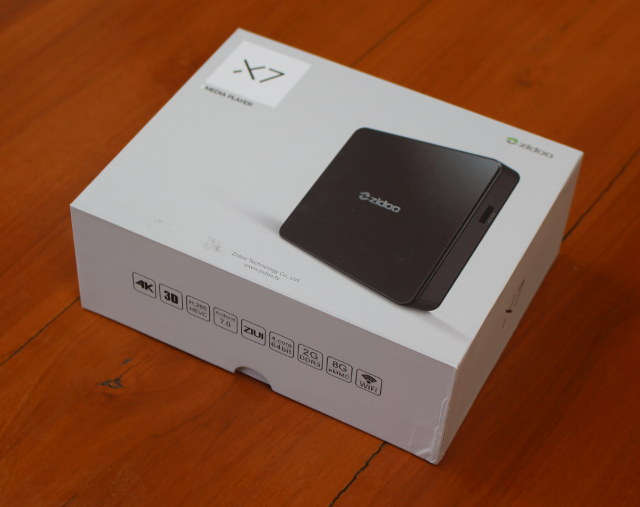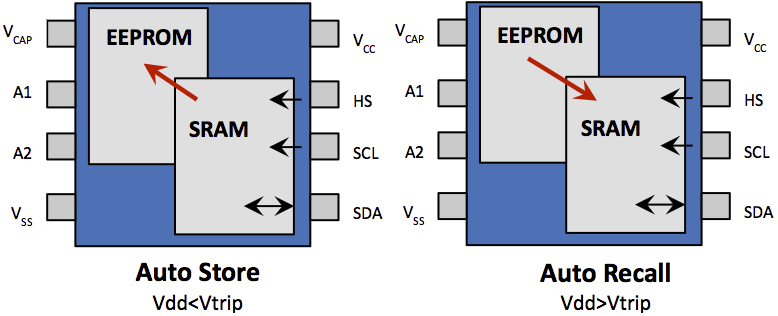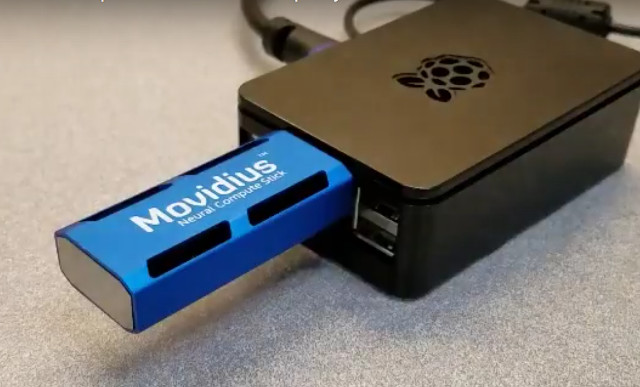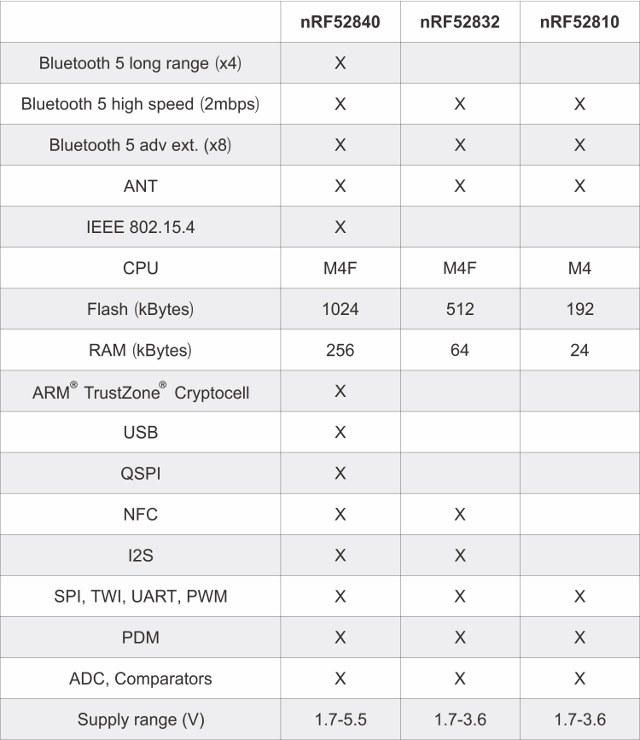While I reviewed MINIX NEO Z83-4 mini PC last year, I found out the fanless mini PC based on Intel Atom X5-Z8300 processor performed well, even matching some Atom X7-Z8700 and Braswell systems in some cases, and offered some BIOS features not always found in competitor models, with the only real downside being the 32GB eMMC flash with average performance. Since then, it’s become quite popular becoming the best seller on Amazon US in the mini PC category, outselling devices like ASUS Chromebox and Apple Mac Mini, and the company has now launched a new variant called MINIX NEO Z83-4 Pro with Windows 10 Pro, an upgraded Intel Atom X5-Z8350 processor, and an included VESA mount making it more suitable for enterprise applications such as digital signage, point-of-sales, and thin client. MINIX NEO Z83-4 Pro Specifications Highlights show differences against Z83-4 model: SoC – Intel Atom x5-Z8350 “Cherry Trail” quad […]
CrazyPi Board Runs Ubuntu and ROS on Rockchip RK3128 SoC for Robotics & IoT Projects (Crowdfunding)
CrazyPi is a maker board powered by Rockchip RK3128 quad core Cortex A7 processor that can take various magnetically connected modules such as LIDAR, gimbal, 4G LTE, etc.., and runs both Ubuntu and ROS (Robot Operating System) for DIY robotics & IoT projects. CrazyPi main board specifications: SoC – Rockchip RK3128 quad core Cortex A7 processor @ 1.2 GHz with ARM Mali GPU MCU – ARM Cortex-M3 @ 72 MHz System Memory – 1GB DDR3L @ 1066 MHz Storage – 16GB eMMC flash pre-loaded with Ubuntu and ROS Connectivity – 802.11 a/b/g/n WiFi @ 150 Mbps, Bluetooth 4.0 USB – 1x USB 2.0 host port Expansion Headers – Two headers with a total of 36-pin exposing 1x HDMI, 1x speaker, 1x microphone, 3x PWM, 1x I2C, 1x UART, 1x SPDIF, 1x SPI, 1x USB Power Supply – 5V via micro USB port ? Dimensions – Smaller than credit card The […]
Hardkernel to Launch Stackable $49 ODROID-HC1 Home Cloud & $200 ODROID-MC1 Cluster Solutions
Hardkernel ODROID-XU4 board is a powerful – yet inexpensive – ARM board based on Exynos 5422 octa-core processor that comes with 2GB RAM, Gigabit Ethernet, and a USB 3.0 interface which makes it suitable for networked storage applications. But the company found out that many of their users had troubles because of bad USB cables, and/or poorly designed & badly supported USB to SATA bridge chipsets. So they started to work on a new board called ODROID-HC1 (HC = Home Cloud) based on ODROID-XU4 design to provide a solution that’s both easier to ease and cheaper, and also includes a metal case and space for 2.5″ drives. They basically remove all unneeded features from ODROID-XU4 such as HDMI, eMMC connector, USB 3.0 hub, power button, slide switch, etc… The specifications for ODROID-HC1 kit with ODROID-XU4S board should look like: SoC – Samsung Exynos 5422 quad core ARM Cortex-A15 @ 2.0GHz […]
VoltaStream ZERO NXP i.MX6ULL Linux Audio Board Follows Raspberry Pi Zero Form Factor
Back in 2013. Philip came with the idea of designing a development board for audio application, and after various experiments with off-the shelf Raspberry Pi boards and audio DACs, he founded PolyVection company, and started designing the board. Forwarding to today, he has completed his work and introduced VoltaStream ZERO to the world, a board based on NXP i.MX6ULL processor with 512MB or 1GB RAM, and a choice of Texas Instruments DAC. It also follows Raspberry Pi Zero form factor, like the upcoming Banana Pi BPI-M2 Zero board. VoltaStream ZERO specifications: SoC – NXP i.MX6ULL ARM Cortex-A7 processor @ 996 MHz System Memory – 512 MB or 1 GB DDR3 Storage – micro SD card slot Audio 1x I2S for integrated DAC, 1x I2S for GPIO access, 1x S/PDIF header / TOSLINK jack Analog DAC – Texas Instruments PCM5121 (106 dB) or PCM5142 (112 dB) USB – 1x micro USB […]
Zidoo X7 TV Box Review – Part 1: Unboxing & Teardown
Zidoo X7 is another Rockchip RK3328 based TV box that has the advantage of coming with 2GB RAM, 802.11ac WiFi and Bluetooth 4.1, as well as Zidoo firmware support, compared to its cheaper competitors such as A95X R2 TV box. The company sent me a review sample to check out it. As a side note, it was quite a challenge to get the box, as my country of residence enacted a new law requiring a “broadcasting license” to import TV boxes and HDMI dongles, even if you get just one unit, so the first attempt failed to got through customs, but eventually I managed to get the box through a local reseller. Back to the review… As usual I’ll write a first part showcasing the hardware design today, before testing the firmware, and publishing my results next month. Zidoo X7 Unboxing The package shows some of the key features of […]
Microchip EERAM Combines SRAM and Backup EEPROM into a Single Chip
Most micro-controllers comes with both SRAM volatile memory, and flash or EEPROM for non-volatile (persistent) memory, but Texas Instruments – and other companies – have been selling MCUs with FRAM (Ferroelectric Random Access Memory) and standalone FRAM chip, a non-volatile memory that delivers performance and power efficiency similar to SRAM, and much better endurance that either flash or EEPROM. You don’t see FRAM in that many MCUs and solutions, because it’s more expensive than having SRAM + flash, but some applications requiring ultra low power consumption and non-volatile storage write capabilities may benefit from the technology. Those include data logging, sensor networks, and batteryless applications. Microchip has also it own technology with EERAM, a non-volatile SRAM memory that includes a “shadow” EEPROM used to automatically backup data on power down with a small external capacitor providing enough power to save SRAM to the EEPROM. Once power is recovered (Vdd > […]
Movidius Neural Compute Stick Shown to Boost Deep Learning Performance by about 3 Times on Raspberry Pi 3 Board
Intel recently launched Movidius Neural Compute Stick (MvNCS)for low power USB based deep learning applications such as object recognition, and after some initial confusions, we could confirm the Neural stick could also be used on ARM based platforms such as the Raspberry Pi 3. Kochi Nakamura, who wrote the code for GPU accelerated object recognition on the Raspberry Pi 3 board, got hold of one sample in order to compare the performance between GPU and MvNCS acceleration. His first attempt was quite confusing as with GoogLeNet, Raspberry Pi 3 + MvNCS achieved an average inference time of about 560ms, against 320 ms while using VideoCore IV GPU in RPi3 board. But then it was discovered that the “stream_infer.py” demo would only use one core out of the 12 VLIW 128-bit vector SHAVE processors in Intel’s Movidius Myriad 2 VPU, and after enabling all those 12 cores instead of just one, […]
Nordic Semi nRF52840 vs nRF52832 vs nRF52810 Comparison for Bluetooth 5 Applications
Bluetooth 5 was formally introduced earlier this year with promises of four times the range, and twice the speed. Several companies offer chips that are compatible with the new standard, and among them Nordic Semi offers Bluetooth 5 ready solutions via nRF52840, nRF52832, nRF52810 Bluetooth SoCs. However, if you thought – like I did – that all three would provide the same Bluetooth 5 support with just some differences in memory, storage and performance, a comparison table put together by Raytac Corporation will show that among the three SoCs only nRF52840 will support the longer range, while the two older SoC only support the extra bandwidth offered by Bluetooth 5. I could find a blog post about a long range demo that confirms the above: Two nRF52840 Preview Development Kits (PDK) or nRF52832 Development Kits. A combination of the two different kits can also be used. Notice that if the […]


